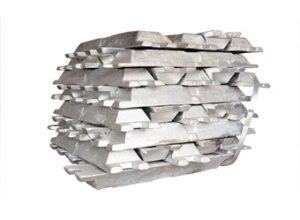Die-casting aluminum ingots play an important role in the industrial field. So how is it casted? Let me give you a brief introduction.
In the casting process of aluminum ingots, molten aluminum is injected into the mold, and after cooling into a billet, the injection process is a key step in the quality of the product. The casting process is also the physical process of crystallization from liquid aluminum into solid aluminum.

The technological process of casting aluminum ingots is roughly as follows: aluminum production – slag removal – weight inspection – batching – furnace loading – refining – casting – aluminum ingots for remelting – finished product inspection – finished product inspection weight – storage. Commonly used casting methods are divided into continuous casting and vertical semi-continuous casting. Continuous casting can be divided into mixed furnace casting and external casting. All use continuous casting machines.
Mixed furnace casting is the process of pouring molten aluminum into the mixing furnace and casting from the mixing furnace. It is mainly used to produce aluminum ingots and casting alloys for remelting. Outer casting is cast directly from the ladle to the casting machine, which is mainly used when the casting equipment cannot meet the production requirements, or the quality of incoming materials is too poor to be directly fed into the furnace.

The production process of aluminum ingots is different from the die-casting process. The casting process may require some physical methods of casting. The above are some simple introductions, hoping to help everyone.